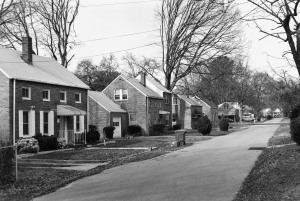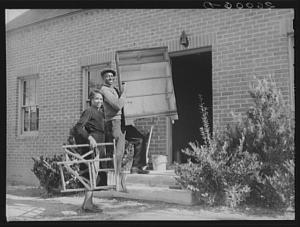By Linda Tarrant-Reid
When Franklin Delano Roosevelt became president in 1933, the United States was a divided America – one Black and one White. The 1896 Supreme Court Decision in the Plessy v. Ferguson Case had effectively outlawed the mixing of the races in public accommodations including restaurants, hotels, libraries, hospitals, public restrooms, buses and trains, water fountains, pools, beaches, and housing.
America was also in the midst of the Great Depression which began with the stock market crash of 1929 and continued into the late 1930s and early 1940s. Roosevelt’s first act as president was to initiate a plethora of social programs he branded the New Deal to provide relief for unemployed Americans and farmers, assist in the recovery of businesses, and reform the banking industry. Roosevelt’s mandate was “to help the forgotten man at the bottom of the economic pyramid.”
Aberdeen Gardens, a planned community in Hampton, Virginia, was one of the programs under the New Deal’s Homestead Project.

Aberdeen Gardens, an African American planned community built for African American workers in Virginia, designed by Black architect Hilyard R. Robinson during New Deal.
Hampton Institute (now Hampton University), a historically black university, received a $245,000 grant from the federal government to design and construct housing for African Americans who worked in the shipyards and dock yards in Newport News, Virginia. Black architect Hilyard R. Robinson, a graduate of Howard University, also a historically black university, was charged with designing the unique neighborhood and Charles Duke, also a Black architect, held the title of architect-in-charge of the Homestead Project, and managed the construction.
Built “by Negroes for Negroes,” boasts the historic marker on Aberdeen Road and Mercury Boulevard in Hampton, Virginia. The description, inscribed on the marker, of the first planned community for African Americans reads:
Aberdeen Gardens began in 1934 as the model resettlement community for Negro families. It was the only such community in the United States designed by a Negro architect (Hilyard R. Robinson) and built by Negro contractors and laborers. Aberdeen Gardens is composed of 158 brick houses on large garden lots, a school, and a community store, all within a greenbelt. The streets, excepting Aberdeen Road, are named for prominent Negroes. Aberdeen Gardens offered home ownership and an improved quality of life in a rural setting. In 1994 this nationally significant neighborhood was listed as a Virginia landmark and in the National Register of Historic Places, through the efforts of former and current residents.
This year is the 75th anniversary of Aberdeen Gardens and the community is still intact! And second and third generations of the original homeowners occupy these one-family homes today. According to lifelong resident, Margaret J. Wilson, president of the Aberdeen Gardens Historical Foundation, “The 75thanniversary is a momentous occasion for us.
We are a close-knit community and are absolutely passionate about Aberdeen Gardens. Whenever we get together, we always reminisce about the family members who settled the community in the beginning and are no longer with us.”
Mrs. Wilson, 72, has the distinction of being the first grandchild born in the community. Her grandparents, Charlie and Maggie Jones, were the first family to move into Aberdeen Gardens on November 1, 1937. Mrs. Wilson’s granddad worked at the Newport News Shipbuilding and Dry Dock Company, as did many of the fathers and husbands, who were able to purchase their homes over a 30-year period at 3 percent interest.
The planned community was a program of the Farm Security Administration and the Department of Interior’s Homestead Division which offered struggling families an opportunity to move out of substandard housing. During the Depression many families lived in cramped housing with “no indoor plumbing, no indoor heat and no access to a garden to grow food” said Mrs. Wilson in a recent interview. Aberdeen Gardens changed that and “everyone had a garden, indoor plumbing, indoor heat and hardwood floors.”
The 75th anniversary of Aberdeen Gardens kickoffs in June with a Heritage Celebration culminating in October with a formal affair. The story of Aberdeen Gardens is one of those hidden gems that when discovered gives one hope. Amidst struggle in the deep Depression of the 1930s, a beautiful, lasting African American community was born and still lives on today. That’s truly inspiring to me, especially in this economically challenging environment. Happy 75th, Aberdeen Gardens!

